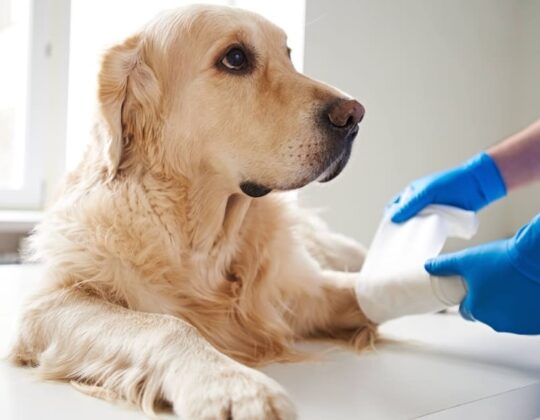As a devoted pet owner, ensuring the health and well-being of your furry companion is a top priority. Pet insurance provides financial protection against unexpected veterinary expenses, offering peace of mind and enabling you to provide the best care for your pet. However, the cost of pet insurance can vary, and finding ways to save on premiums is a savvy financial move. In this guide, we’ll explore practical strategies to help you save money on pet insurance while still providing excellent care for your beloved pet.
1. Start Early: The Advantage of Youth:
One of the most effective ways to save on pet insurance is to start coverage early in your pet’s life. Insuring your pet while they are young and healthy often results in lower premiums. Additionally, coverage at a young age helps address pre-existing condition exclusions that might arise if you wait until your pet develops health issues.
Puppies and kittens generally have lower insurance premiums than older pets. By securing coverage early, you not only benefit from cost savings but also establish a financial safety net for potential health issues that may arise as your pet ages.
2. Compare Plans and Providers: Shopping Around for Savings:
Pet insurance is a competitive market, with various plans and providers offering different coverage options and pricing structures. Take the time to compare plans and providers to find the best value for your pet’s needs.
Consider factors such as coverage limits, deductibles, reimbursement percentages, and any exclusions. Some plans may offer wellness coverage for routine veterinary visits, while others focus on accidents and illnesses. Tailoring the coverage to your pet’s specific needs ensures that you are not paying for unnecessary services.
Online comparison tools and reviews can be valuable resources in evaluating different pet insurance options. Look for reputable providers with positive customer feedback and transparent policies.
3. Choose a Higher Deductible: Balancing Premiums and Out-of-Pocket Costs:
The deductible is the amount you must pay out of pocket before your insurance coverage kicks in. Opting for a higher deductible can result in lower monthly premiums, offering potential savings over time.
While a higher deductible means you’ll be responsible for more upfront costs in the event of a claim, it can be a cost-effective strategy if your pet remains healthy and you can comfortably cover the deductible when needed. Evaluate your budget and risk tolerance to determine the most suitable deductible for your financial situation.
4. Consider Coverage Limits and Reimbursement Rates: Finding the Right Balance:
Pet insurance policies often have coverage limits, which may be annual, per incident, or lifetime. Similarly, reimbursement rates determine the percentage of covered expenses that the insurance company pays. Balancing coverage limits and reimbursement rates is crucial in finding the right balance between protection and affordability.
While higher coverage limits and reimbursement rates provide more comprehensive coverage, they also come with higher premiums. Evaluate your pet’s specific needs and your budget to choose a plan that aligns with both.
5. Maintain a Healthy Lifestyle: Promoting Wellness for Savings:
A proactive approach to your pet’s health can contribute to both their well-being and potential cost savings on pet insurance. Maintaining a healthy lifestyle for your pet includes:
Regular Veterinary Check-ups: Schedule routine veterinary visits to monitor your pet’s health and address any potential issues early on.
Balanced Nutrition: Provide a well-balanced diet appropriate for your pet’s age, breed, and health condition.
Regular Exercise: Engage your pet in regular physical activity to promote overall health and prevent obesity-related issues.
Dental Care: Implement good dental hygiene practices to prevent dental issues, which can lead to costly treatments.
A healthy lifestyle reduces the likelihood of certain health issues, potentially lowering the number of claims and, in turn, impacting your insurance premiums positively.
6. Bundle Policies for Multi-Pet Savings: Multi-Pet Discounts:
If you have multiple pets, inquire about multi-pet discounts offered by many insurance providers. Bundling policies for all your pets under the same insurance provider can lead to significant savings. Multi-pet discounts often apply to both the premium and the deductible.
Combining coverage for multiple pets not only streamlines your insurance management but also provides a cost-effective solution for ensuring the health and well-being of all your furry family members.
7. Explore Employer-Sponsored Options: Employee Benefits for Pet Owners:
Some employers offer pet insurance as part of their employee benefits package. Check with your employer to see if this option is available. Employer-sponsored pet insurance plans may come with discounted premiums and convenient payroll deductions.
Taking advantage of employer-sponsored options can be a valuable perk, providing financial relief while still offering comprehensive coverage for your pet.
8. Enroll in a Pet Savings Account: A Financial Cushion for Pet Expenses:
Consider setting up a pet savings account to accumulate funds for routine veterinary expenses and potential emergencies. Having a financial cushion allows you to choose a higher deductible or a plan with lower coverage limits, as you have funds earmarked for out-of-pocket costs.
Contributing regularly to a pet savings account ensures that you are financially prepared for veterinary expenses while potentially reducing the need for higher-cost insurance coverage.
9. Review and Update Coverage Regularly: Adapting to Changing Needs:
Your pet’s health needs may change over time, necessitating adjustments to your insurance coverage. Regularly review your pet’s health status, lifestyle, and potential risks to ensure that your insurance coverage remains aligned with their needs.
If your pet develops a chronic condition or requires ongoing medical care, you may need to reassess your coverage and potentially explore additional options or riders to address specific health concerns.
10. Maintain Continuous Coverage: Avoiding Coverage Gaps:
Maintaining continuous coverage for your pet is essential for several reasons. Firstly, continuous coverage ensures that pre-existing conditions are covered, as exclusions may apply if there is a lapse in coverage. Secondly, consistent coverage establishes a track record of your pet’s health, which can be beneficial in case of future claims.
Avoiding coverage gaps and consistently renewing your policy provides stability and reliability in your pet’s insurance protection.
In Conclusion: Affordable Care for Your Furry Companion:
Securing pet insurance is a responsible and caring decision that demonstrates your commitment to your pet’s health and well-being. By implementing strategic measures to save on pet insurance, you can provide excellent care for your furry companion without compromising your budget.
Starting coverage early, comparing plans, adjusting deductibles, and maintaining a healthy lifestyle for your pet are all effective strategies in achieving cost savings. Regularly reviewing and updating your coverage, exploring employer-sponsored options, and leveraging multi-pet discounts contribute to a comprehensive approach to affordable pet insurance.
Remember that while saving on premiums is important, it’s equally crucial to choose a plan that provides adequate coverage for your pet’s specific needs. Striking the right balance ensures that you can navigate unexpected veterinary expenses with confidence, knowing that your pet’s health is protected, and your budget remains intact.








